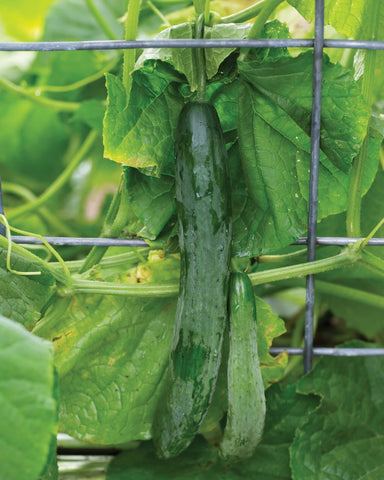When it comes to cultivating your own piece of paradise, the eternal gardening debate often centers around raised garden beds versus traditional in-ground gardens. Both methods have their merits and challenges, but choosing the right approach can significantly impact your gardening experience and the beauty of your outdoor sanctuary. In this article, we'll explore the compelling attributes of raised garden beds, with a special emphasis on their numerous benefits. By the end, you'll be equipped to make an informed decision about the garden that best suits your aspirations and lifestyle.The following content also has some reference value for raised garden beds.

Elevated Delights: The Rise of Raised Garden Beds
Over the years, raised garden beds have emerged as a game-changer in the world of gardening, captivating enthusiasts with their innovation and practicality. A raised garden bed is essentially a contained growing area elevated above ground level, often crafted from a variety of materials such as wood, metal, or stone. These structured beds have revolutionized the way we cultivate plants, offering distinct advantages over the conventional in-ground approach.
Advantages of Raised Garden Beds
1. Optimal Soil Control and Quality
A pivotal benefit of raised garden beds is the unparalleled control they provide over soil composition. Unlike in-ground gardens, where the existing soil might be suboptimal for certain plants, raised beds allow you to create a custom blend of soil, compost, and other organic materials. This means you can cultivate an ideal environment for your plants, ensuring they receive the nutrients, pH levels, and drainage conditions they require.
2. Enhanced Drainage and Aeration
Good drainage is the backbone of a thriving garden. Raised garden beds excel in this department, preventing waterlogged roots and minimizing the risk of root rot. The elevated design ensures excess water can easily escape, and the soil remains well-aerated, promoting healthy root development and overall plant vigor.
3. Reduced Weed Competition
Weeds are the bane of every gardener's existence, relentlessly competing with your cherished plants for essential resources. Raised beds can be a strategic defense against weeds. By elevating your growing space and filling it with fresh, weed-free soil, you can significantly reduce the intrusion of these unwelcome guests, allowing your plants to flourish without constant competition.
4. Convenient Accessibility
Gardening is a joy, but it can also take a toll on your body. Raised garden beds alleviate the strain on your back and knees by raising the planting surface to a more comfortable height. This accessibility factor is a game-changer, especially for seniors, those with physical limitations, or anyone seeking to enjoy gardening without the discomfort often associated with traditional in-ground methods.

5. Extended Growing Seasons
Early spring planting and late fall harvesting become attainable goals with raised garden beds. The improved drainage and aeration, coupled with the ability to cover the beds easily, create a microclimate that warms up quicker in the spring and stays warmer longer in the fall. This means you can extend your growing season and enjoy fresh produce for a more significant portion of the year.
6. Aesthetic Allure
In addition to their practical advantages, raised garden beds are a canvas for creativity. They come in a variety of shapes, sizes, and designs, allowing you to craft a garden that's not only productive but also visually stunning. Elevate your outdoor space's appeal by incorporating raised beds that double as eye-catching focal points.
7. Eco-Friendly and Sustainable
At the heart of the raised bed revolution is a commitment to sustainability. Many gardeners opt for raised beds as part of their eco-conscious journey. These beds promote water conservation, efficient use of resources, and reduced soil erosion, aligning perfectly with the principles of a greener lifestyle.
Balancing Perspectives: Traditional In-Ground Gardens
While raised garden beds boast a plethora of advantages, traditional in-ground gardens continue to hold their ground as a timeless and effective gardening method. Let's explore the merits of in-ground gardening, offering a comprehensive view of the spectrum.
Benefits of Traditional In-Ground Gardens
1. Deep Roots Flourish
If your gardening aspirations include growing trees, large shrubs, or crops with deep root systems, traditional in-ground gardens offer the space and depth these plants need to thrive. The expansive natural soil allows roots to delve deep, providing stability and nourishment for robust growth.
2. Harmonious Soil Interaction
In-ground gardens foster an intimate connection between plants and the native soil ecosystem. This natural interaction encourages a rich diversity of microorganisms, promoting healthy soil structure and nutrient cycling. Over time, this can lead to a more resilient and self-sustaining garden ecosystem.
3. Cost-Efficiency
Traditional in-ground gardens are often more budget-friendly to establish. With no need for raised structures or extensive soil amendments, the initial investment can be lower, making this approach accessible to gardeners with varying budgets.

4. Less Maintenance
Once established, traditional gardens tend to demand less ongoing maintenance compared to raised beds. The self-regulating properties of a well-balanced soil ecosystem can lessen the need for regular interventions, providing a lower-maintenance gardening experience.
Choosing Your Garden: A Personalized Decision
Selecting between raised garden beds and traditional in-ground gardens hinges on your unique preferences, gardening goals, and circumstances. Consider the following factors to help guide your choice:
**Opt for Raised Garden Beds If...
You have limited space
Raised garden beds are a versatile solution for urban gardens, balconies, and patios, making the most of limited spaces and creating a green haven where you least expect it.
Soil quality is a concern
If your native soil is less than ideal—whether it's compacted, lacks nutrients, or has poor drainage—raised garden beds provide a fresh start with tailored soil composition.
Accessibility matters
For gardeners who prioritize comfort and convenience, raised beds offer ergonomic benefits that minimize strain and discomfort during gardening activities.
You seek creative expression
If aesthetics are a driving force behind your gardening endeavors, raised beds offer a chance to design a visually captivating garden that reflects your personal style.
Embrace Traditional In-Ground Gardens If...
Deep-rooted plants are your focus
If your vision includes trees, large shrubs, or specific crops with extensive root systems, traditional gardens accommodate their growth without limitations.
You value a natural ecosystem
Traditional gardens cultivate a harmonious relationship between plants and the existing soil ecosystem, fostering a self-sustaining environment over time.
Budget constraints are a consideration
For gardeners looking to minimize initial expenses, traditional gardens provide a cost-effective alternative without compromising on gardening potential.
You prefer low-maintenance gardening
Once established, traditional gardens generally demand less ongoing care, allowing you to revel in the beauty of nature without constant intervention.
Redefining Your Green Haven: Making an Informed Choice
As you stand at the crossroads of raised garden beds and traditional in-ground gardens, remember that there is no definitive right or wrong choice. Each approach presents a unique array of advantages and possibilities, and the decision should ultimately align with your gardening philosophy, aspirations, and lifestyle. Whether you choose the innovative path of raised garden beds or embrace the timeless beauty of traditional gardening, may your garden flourish with vibrant life, abundant harvests, and the undeniable joy of cultivating your very own slice of paradise.










